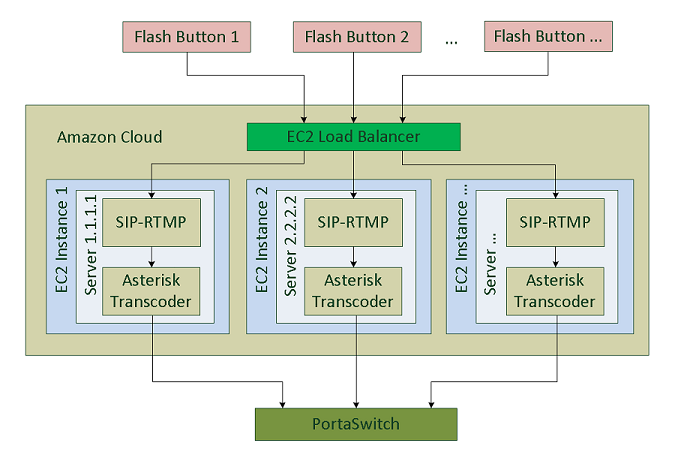An innovative service that you can now offer using PortaSwitch is web click-to-call. It is intended for customers who are small, medium or large businesses with their own websites, and who use your PortaSwitch for VoIP service. Clicking a special "Call Now" button placed on that website will initiate a call to a pre-determined number (usually the company’s call center) directly from the web browser, for a conversation using speakers/microphone.
The end user of the service can be anybody in the world viewing this website, and they make the call free of charge, without the need for a separate IP phone or installing any software on their computer. This is a great competitive advantage for companies looking to find new customers (or maintain their relationship with existing ones) around the world.
Let’s take the example of a tour operator located in Costa Rica which advertises its services on its web page. When a potential customer in the US finds the page via a web search, he may have some additional questions before placing an order. The "traditional" way for him to do this would be to either send an email (which may be too slow) or dial the tour operator’s number in Costa Rica (which he may not want or be able to do, since an international call would be too expensive). As a result, it is very likely that being unable to contact the tour operator promptly will lead the customer to keep searching for other alternatives, and so a sales opportunity is lost. One possible solution in this particular situation would be for the tour operator to obtain a US toll-free number which customers can call, but this involves additional costs and only works for specific countries (for instance, a prospective customer from Mexico or Norway would face the same problem as before).
PortaSwitch offers a better alternative: by using a click-to-call control on the website, potential customers can immediately contact the tour operator. This is free of charge for the end user, and there is no cost to the tour operator either (since the call is delivered to their hosted PBX environment). So now the tour operator can attract new customers at no extra cost, regardless of where they are located in the world.
Technical details
When the user initiates the call, a Flash applet is launched in his browser. The applet communicates with a voice mediation server using the RTMP protocol. These are servers running in the Amazon Elastic Compute Cloud (Amazon EC2) environment, to minimize hardware costs and allow easy scalability. The voice mediation server then sends a regular SIP call to PortaSwitch, where it is delivered to a pre-determined destination (which may be an auto attendant, a hunt group, or a phone number provisioned on an IP phone).
There is no call-control program code on the web page visible to the end user, and so there is no possibility of hacking the button to make fraudulent calls (e.g., to a destination other than the one originally intended by the owner of the website).
The code for the button itself is open, under a GPL license (http://code.google.com/p/siprtmp/). Asterisk is only required for media transcoding. The streams flow in the following way:
Signal: from Flash plugin (RTMP) via SIP-RTMP (RTMP <-> SIP gateway) to PortaSIP Voip server(SIP rfc 3261) Media: from Flash plugin (Speex/G.729) via Asterisk (media converter) to SIP client or PortaSIP RTPProxy
Currently, the Flash button can send media using the Speex or G.729 (license required) codecs. Other codecs require transcoding.



